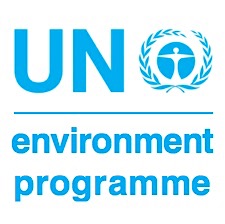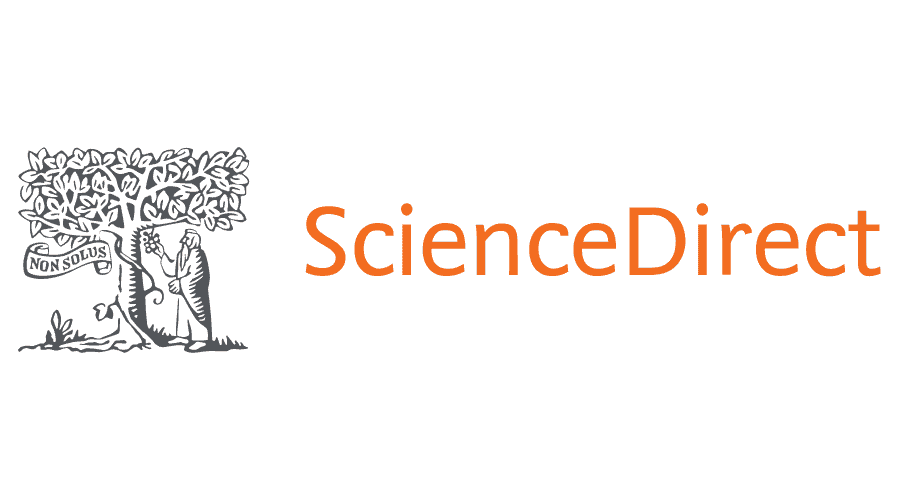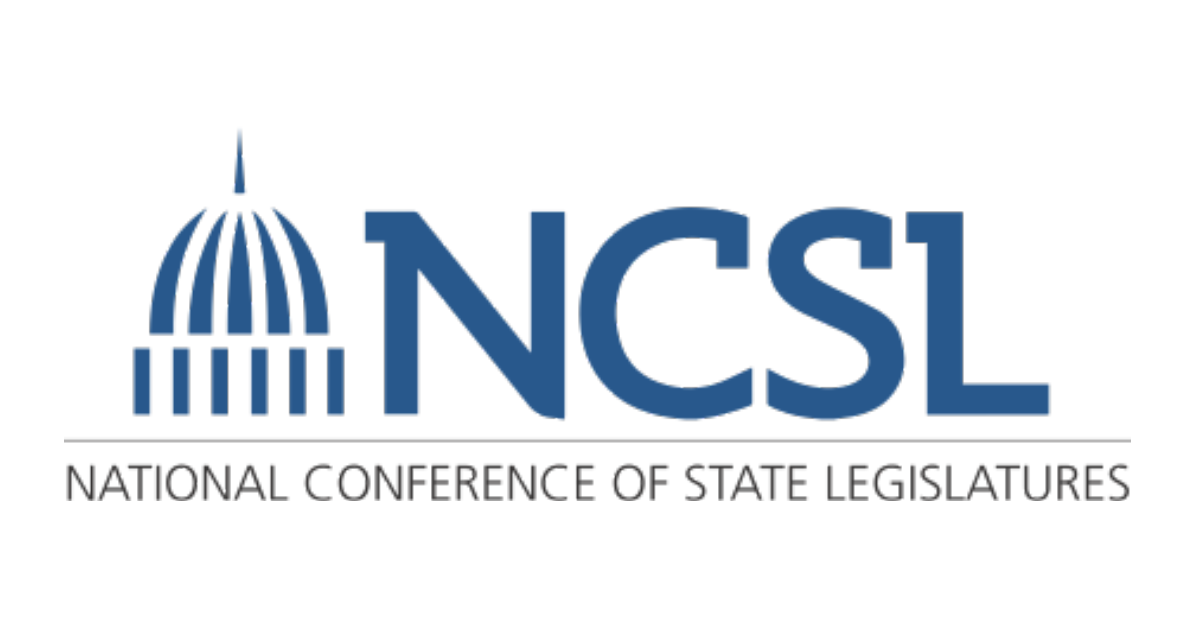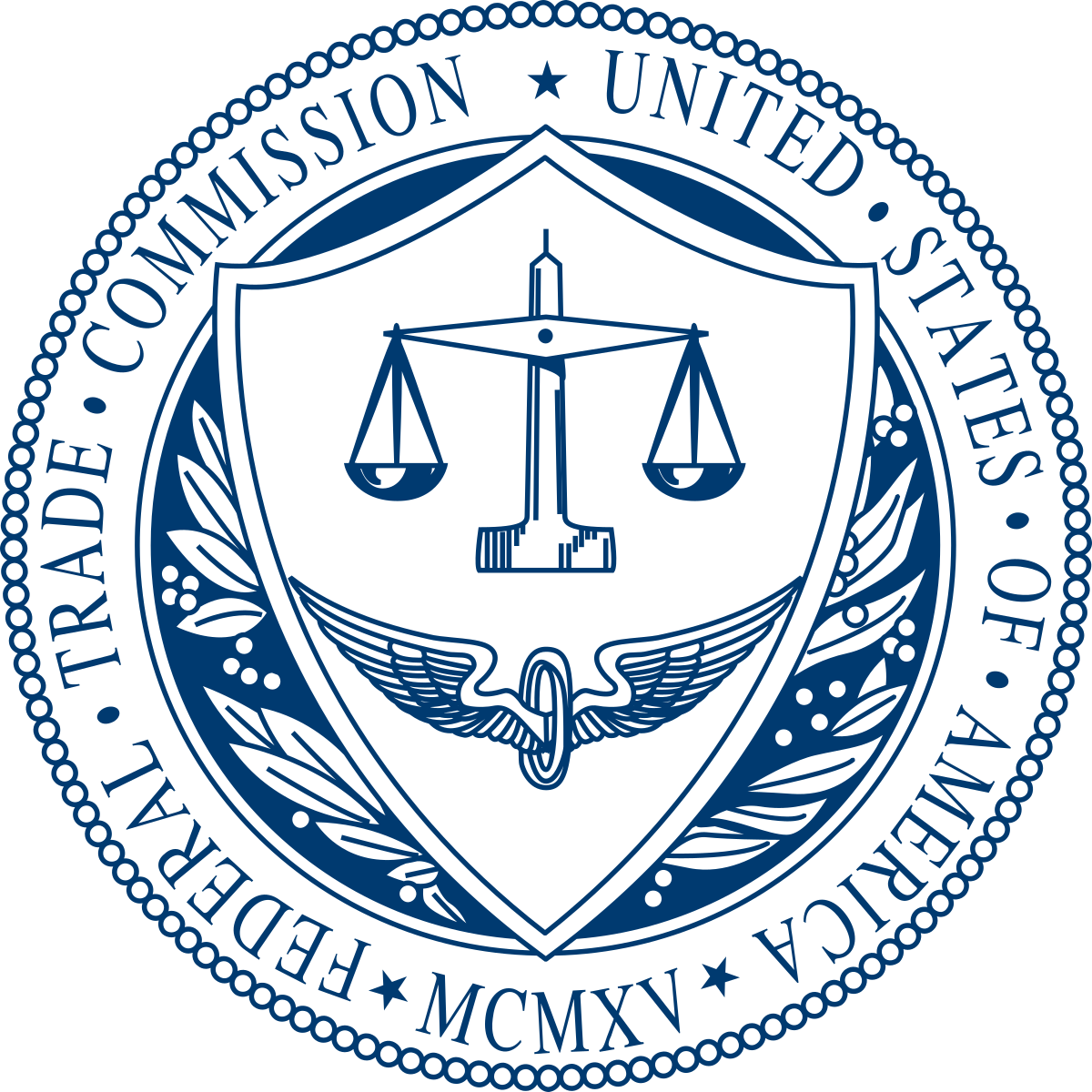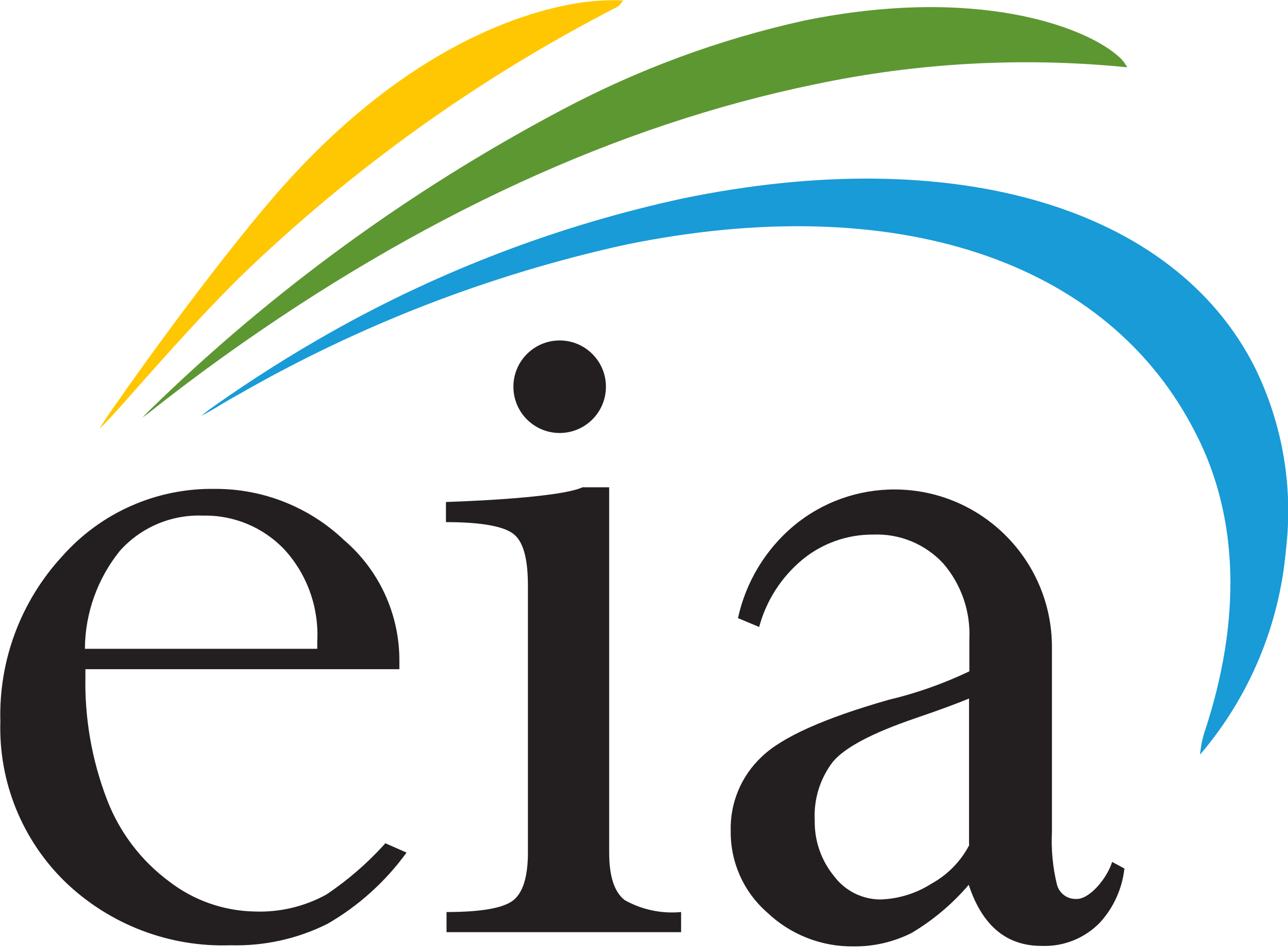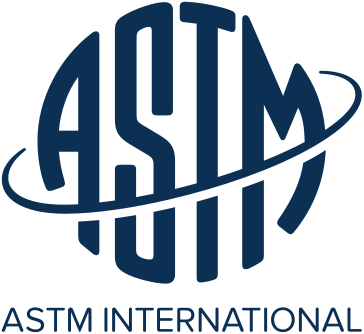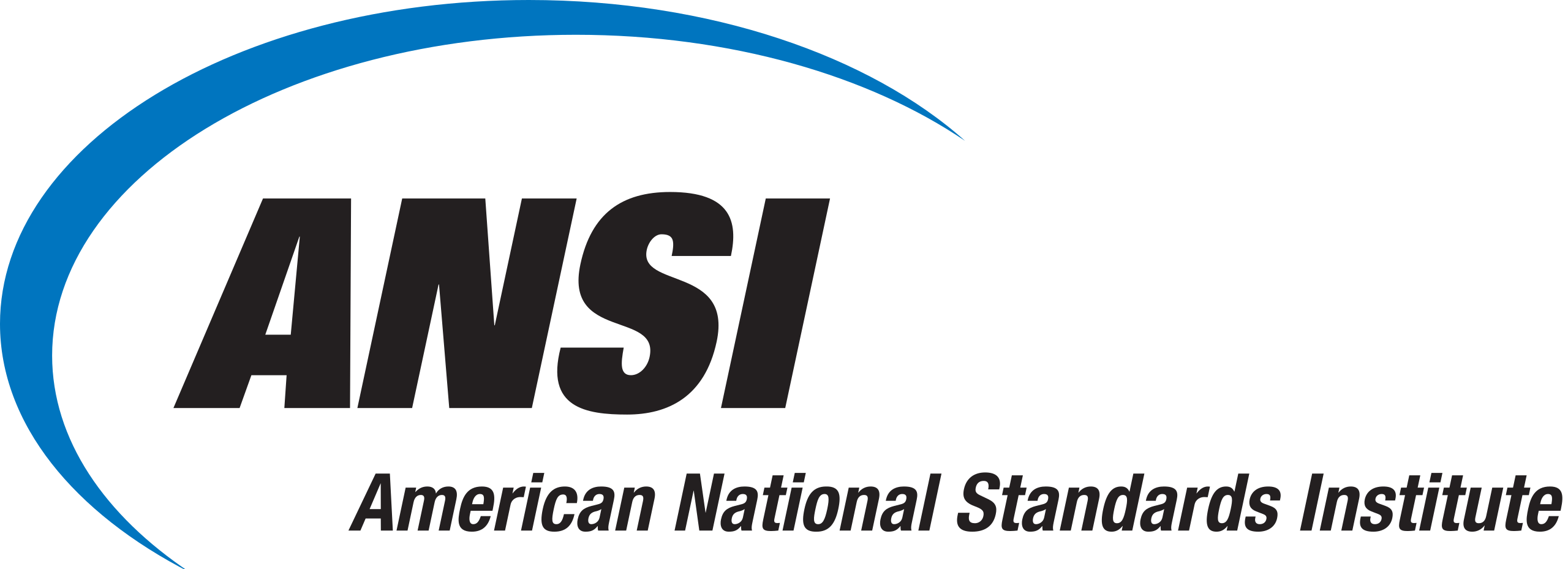Beyond the Bin: A Definitive Guide to Recycling Plastic Packaging

Photo by Karina Tess on Unsplash
Introduction
Illegally and improperly dumped, wind-blown plastic waste in land ends up in oceans and waterways. Marine biodiversity is one of the most affected, with plastic constituting 80% of marine debris.
This situation can be prevented by recycling plastics, starting with the ubiquitous plastic packaging we see and use daily. That soda bottle or takeout container gets discarded right after use, but it doesn’t really go anywhere for a long time.
Globally, only 9% of plastic waste is recycled, according to the Organisation for Economic Co-operation and Development. In the United States, the plastic waste situation looks like this:
- Plastics made up 12.2% of the total municipal solid waste (MSW) generated in 2018, according to the United States Environmental Protection Agency. Three million tons of plastic were recycled in the same year, reflecting a 8.7% recycling rate.
- Plastic containers and packaging accounted for 5% of the MSW generated in 2018. That’s 14.5 million tons of plastic containers and packaging.
These figures provide a clear backdrop of why recycling should come to the fore and paced faster to keep up with the waste generated. This guide aims to unpack recycling plastic packaging as a viable solution to the pressing and mounting plastic waste problem.

Understanding Plastic Packaging
Containers and packaging accounted for 28.1% of the total MSW generated in the US. The same year, 53.9% of the generated containers and packaging were recycled. In the context of the EPA analysis, whose statistics are used throughout this guide, containers and packaging are those “assumed to be discarded the same year the products they contain are purchased.” These containers and packaging, which are used for shipping, storage, and protection of products, are made from materials like plastics, paper and paperboard, and wood.
Plastic containers and packaging are diverse products made with different plastic resins. Here are few examples noted by EPA in its analysis:
- Polyethylene terephthalate (PET) used in beverage bottles
- High-density polyethylene (HDPE) used in water and milk jugs
- Low-density polyethylene (LDPE) used in films
- Polypropylene (PP), polystyrene (PS), polyvinyl chloride (PVC), etc., used in food and produce containers
What Is Plastic?
Plastic is made of large molecules called polymers. These polymers are made up of repeating smaller parts known as monomers. The type of monomers used and the way they are connected determines the properties of the plastic. Plastics can be derived from various sources, commonly from oil but also from plants. Depending on how the polymers are made and what other ingredients are added, the resulting plastic can vary—from rigid to flexible, transparent to opaque, and permeable to impermeable.
The pliability of plastics makes them popular and purposeful. They can be durable, lightweight, versatile, and cheap to mass produce—qualities that deem them perfect for preserving and protecting goods, keeping them fresh, intact, and safe until they reach consumers.
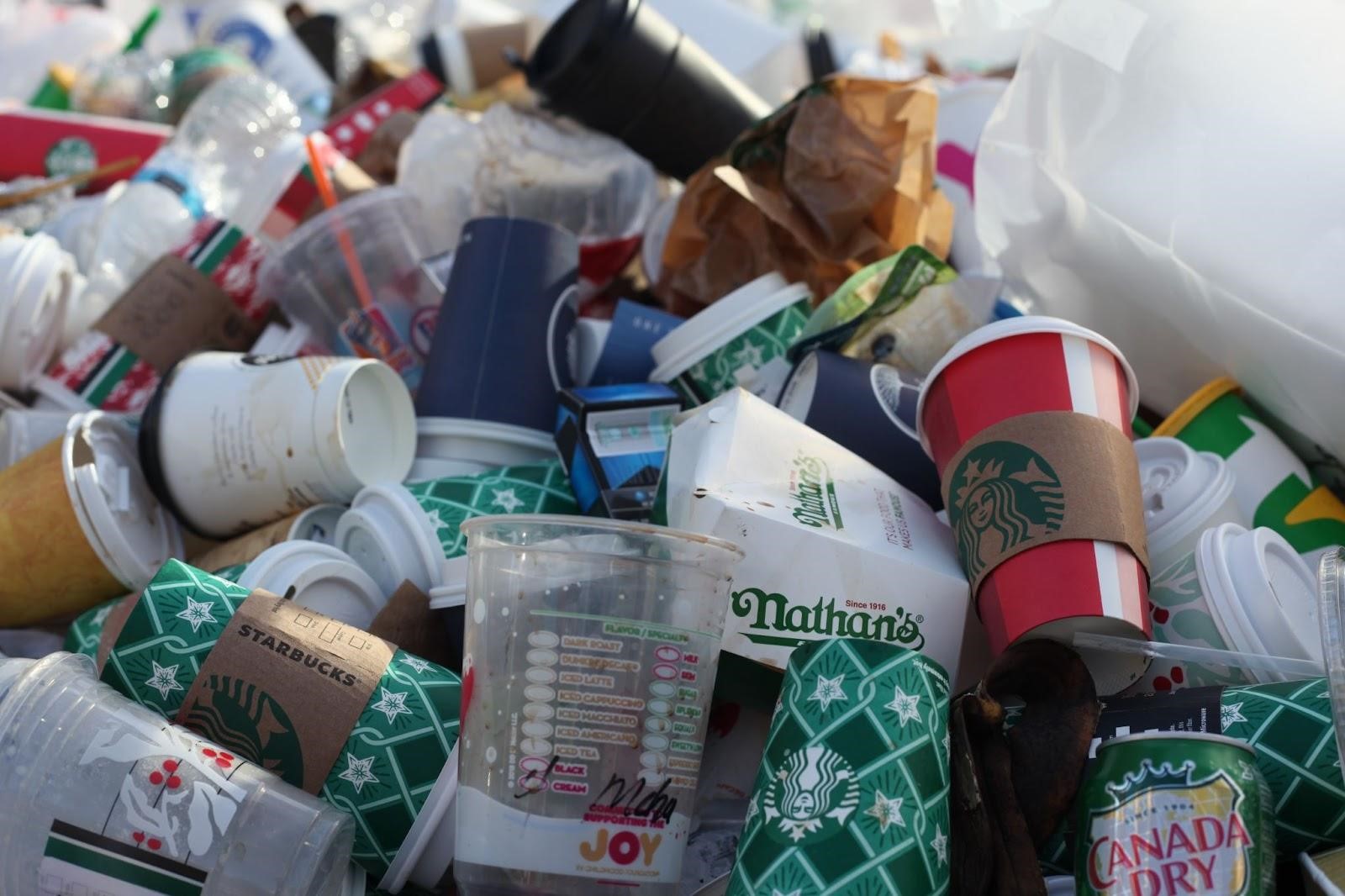
The Importance of Recycling
Recycling is a key point of a circular economy, a way to keep materials and products in circulation and eliminate waste in the process. It’s beneficial to recycle plastics for these reasons.
Recycling Reduces Landfill Waste
Recycling diverts some plastics from landfills. The EPA analysis reveals that more than 69% of the plastic containers and packaging generated in 2018 were landfilled. Not all plastics are recyclable, but it’s possible that some have ended up landfilled when they should have been recycled.
Landfills themselves have their share of problems. One, which is tied to climate change, is the release of greenhouse gases like methane when organic material decomposes. According to EPA, MSW landfills accounted for 14% of the total US methane emissions in 2021.
Another concern is waste exceeding a landfill’s capacity, and related or not, rich countries have exported their plastic waste to developing nations. That waste may have “escaped” the landfills of a country, but the possibility of it polluting the air, soil, and water of another country is not far-fetched.
Recycling Saves Energy
Recycling reduces a product’s environmental impact. Savings in terms of energy and resources can be realized when you make a product with recycled content, as opposed to making one entirely from new materials that would have to be extracted from the environment or produced for that purpose.
Santa Barbara County Resource Recovery & Waste Management Division, citing a 2005 Senate report, notes that a ton of recycled plastic can save 5,774 Kwh of energy, 16.3 barrels of oil, 98 million Btus of energy, and 30 cubic yards of landfill space.
Recycling Helps Curb Greenhouse Gas Emissions
Waste prevention could reduce greenhouse gas emissions by 18 million metric tons of carbon equivalent (MMTCE). Recycling—suppose the rate increases to 35% from 35%—could add another 10 MMTCE.
Greenhouse gas emissions are reason enough to properly dispose of or recycle plastics. It’s a known fact that these emissions occur at every stage of a plastic’s lifecycle, which may have begun from its source fossil fuels.
A study from Hawaii University mentions that commonly used plastics, if exposed to solar radiation, could emit methane and ethylene. Of the seven types of plastics studied, LDPE was found to have released those greenhouse gases the most.
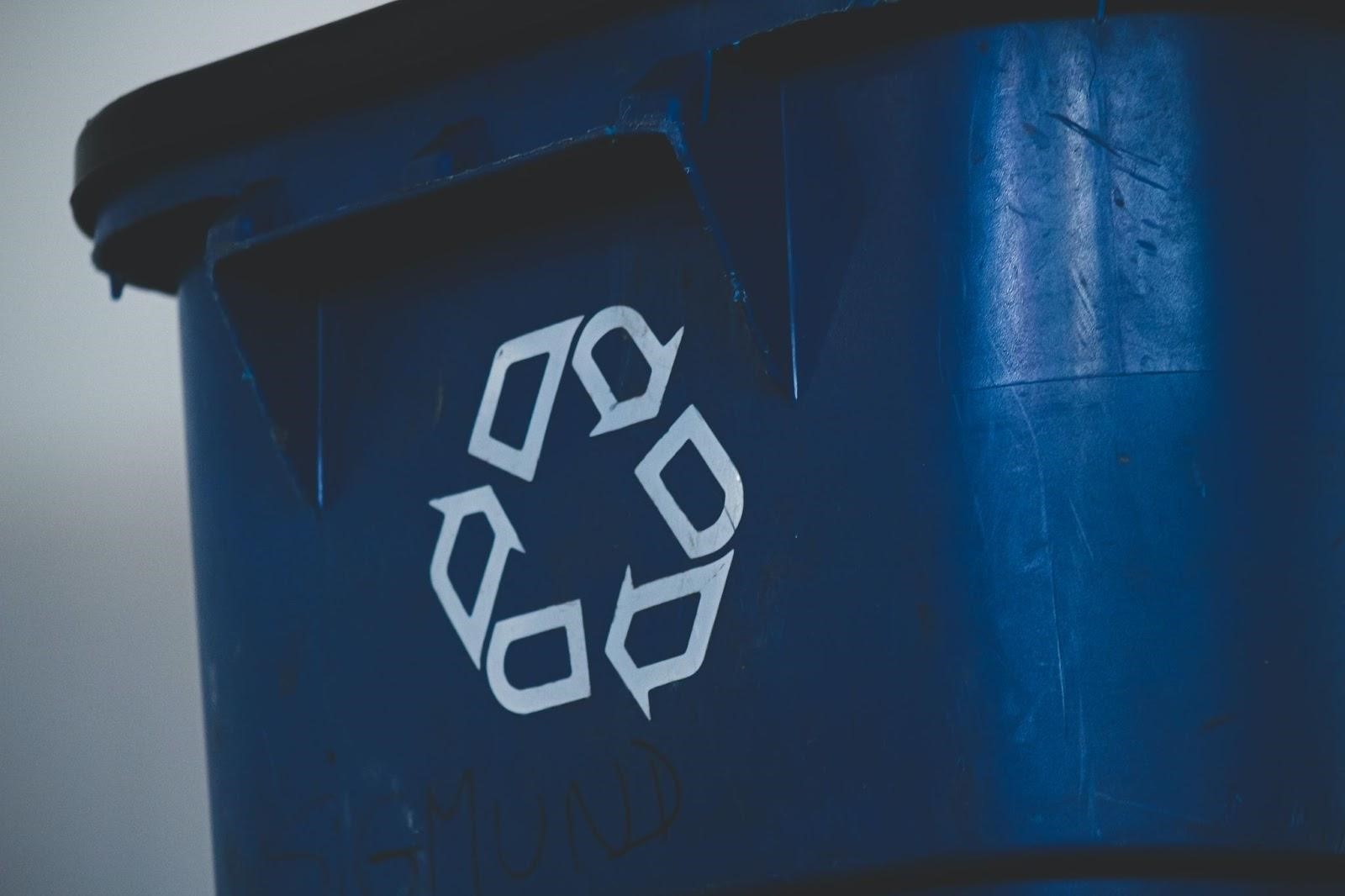
The Different Plastic Types
Resin identification codes are numbers found in plastic containers, bottles, bags, etc. They identify the resin used in the product. Take a look at this sample RIC from the American National Standards Institute (ANSI)’s official blog:

Alt Text: Resin identification marker consisting of a triangle, resin identification number, and resin abbreviation to aid in recycling
| Resin Identification Number | Resin | Examples |
| 1 | Polyethylene terephthalate (PET or PETE) | Plastic bottles for water, soda, and other beverages |
| 2 | High density polyethylene (HDPE) | Milk jugs; bottles for shampoo, lotion, detergent |
| 3 | Polyvinyl chloride (PVC or V) | PVC food wraps, medical bags, tubes and pipes |
| 4 | Low density polyethylene (LDPE) | Plastic cling wrap, plastic shopping bags, sandwich bags |
| 5 | Polypropylene (PP) | Yogurt containers, bottle caps, clamshell containers |
| 6 | Polystyrene (PS) | Coffee cups, food containers, egg cartons |
| 7 | Others, including materials made with more than one resin from numbers 1 to 6 | Polylactic acid (PLA) food containers and packaging |
Resin Codes and Recycling
Resin codes can help recyclers manually sort plastics for recycling and consumers identify which is safe to use or can be recycled, as some towns or recycling centers specify the plastic numbers and resins they accept for recycling. These plastic numbers aid in recycling, but they don’t indicate recyclability or whether a product is recyclable or not.
Also notice that the number is inside an equilateral triangle instead of the three-chasing-arrows symbol. This is to prevent confusion over the presence (or absence) of the resin code in a plastic product.
Recycling varies from one place to another, so always check with your town or city. Generally speaking, plastic bottles will be put in the recycling bin for curbside collection, while some recyclable materials will have to be dropped off at a specified site.
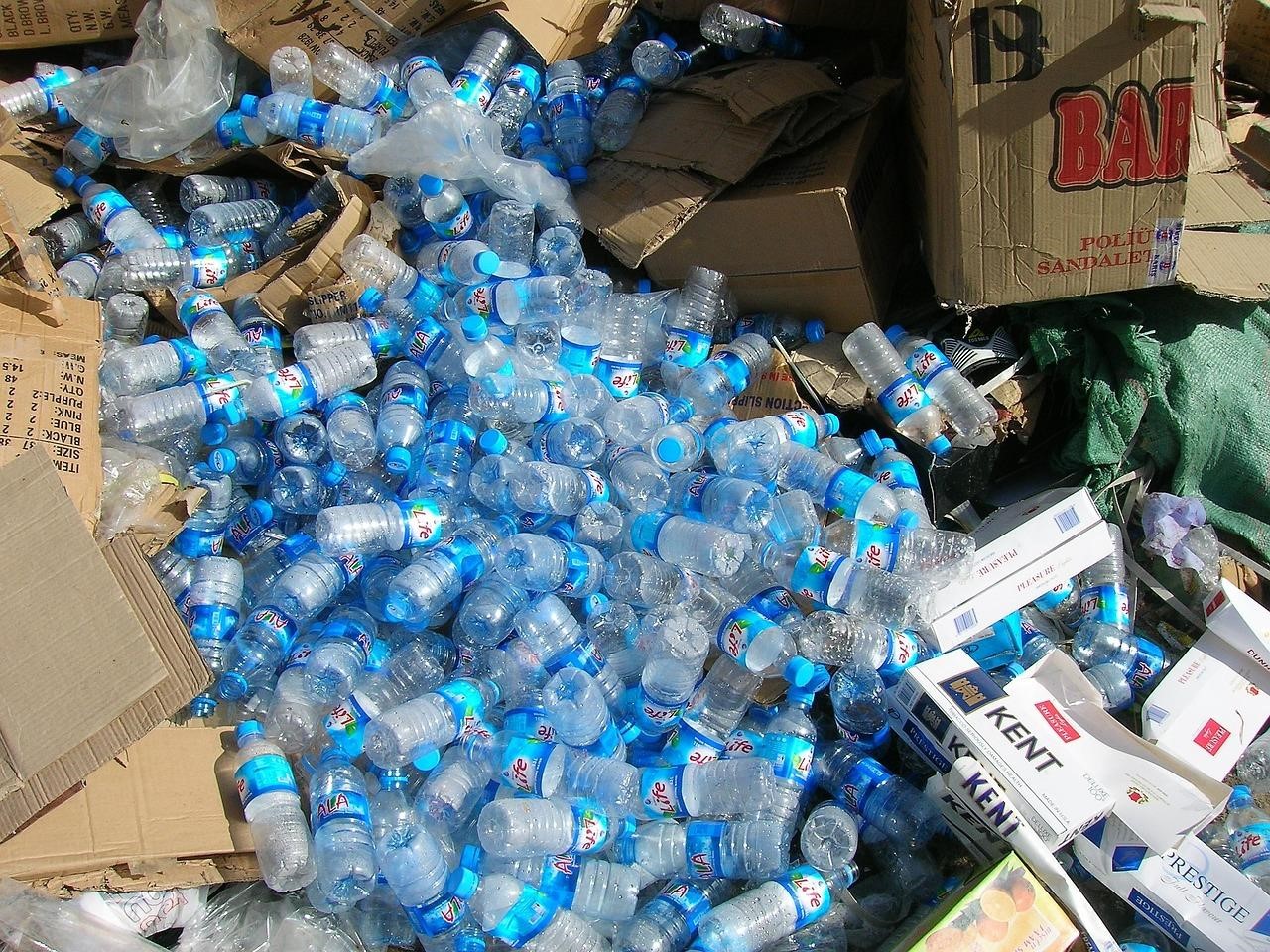
Recyclability of Different Plastics
Market demand and local regulations are key factors affecting a government entity’s decisions about recycling because the process requires machinery, manpower, and money.
Plastic no. 1 and 2, PET and HDPE respectively, are widely recycled in the US and anywhere else. Caps (HDPE, PP) that came with the bottles are also generally recyclable.
According to 2018 figures from EPA, 29.1% or 910,000 tons of PET bottles and jars were recycled. About 29.3% of HDPE natural bottles generated, or 220,000 tons, were recycled.
PET and HDPE are the most recyclable plastics because they are easy to recycle. Bottles made wholly with PET (or any single material) are easier to sort. There is also demand for recycled PET and HDPE.
There are also some plastics that your community might not accept for recycling. Plastic no. 3 or PVC is generally perceived to be harmful because of toxins that could be released during recycling. So even if PVC can be recycled, it’s likely for a local community recycling program not to accept it. Recycled or not, discarded products with PVC have to be properly handled.
Plastic no. 6 or PS can be recycled, but recycling polystyrene food packaging is hard because of its high level of contamination. There may also be limited demand for recycled PS.
For all the other plastic numbers and products, refer to your locale or check with private recyclers that accept hard-to-recycle plastics.
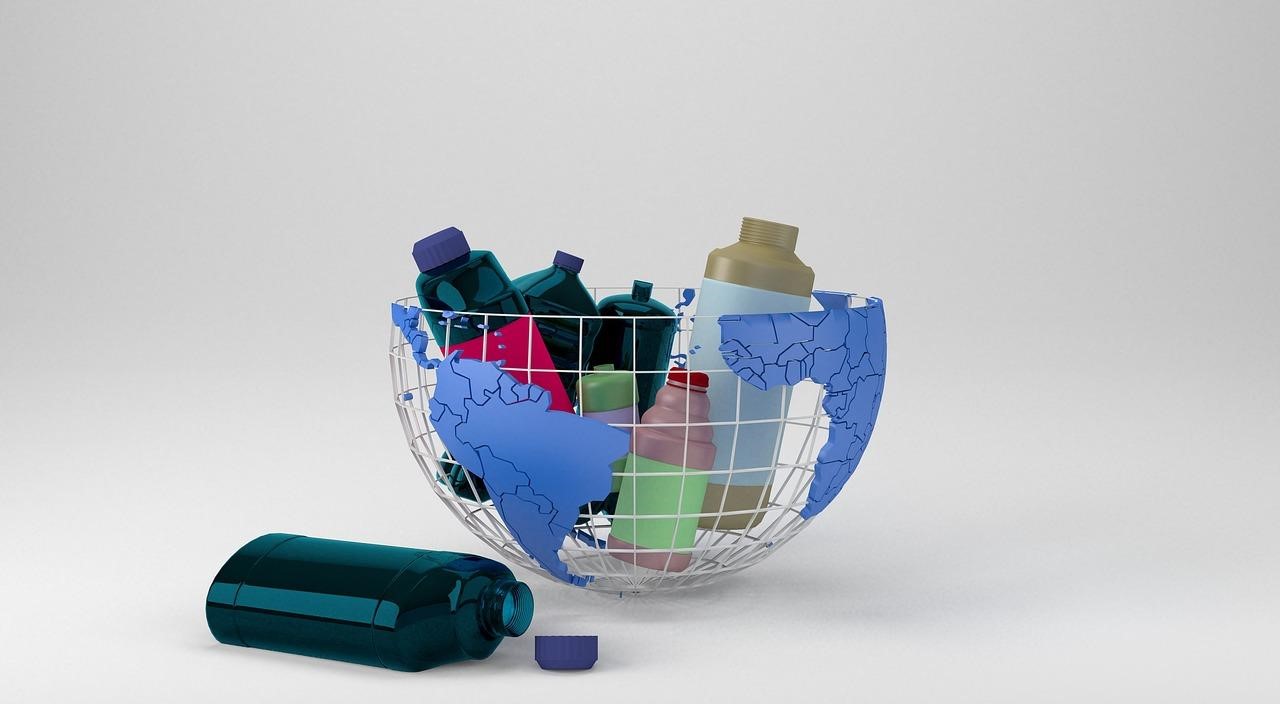
Preparing Plastics for Recycling
Consider these best practices for preparing your household plastics for recycling:
- Identify which recyclables go in the curbside recycling bin or to a drop-off site. Always best to check local guidance.
- Rinse bottles and containers of any liquids or residues. Once they are empty and clean, dry the recyclables. This prevents contaminating other items in the bin and keeps the processes as efficient as possible.
- Empty and replace caps according to the Association of Plastic Recyclers (APR). As mentioned earlier, caps can be recycled with the bottles—the organization mentions its support for caps or closures to remain on containers before the latter are replaced in the recycling bin or cart.
- Confirm whether your local program accepts caps and lids and whether they should be separated from bottles or kept on.
- Don’t flatten bottles, as doing so could lead to improper sortation. “Retaining a 3D form can help containers be successfully sorted,” the APR said.
- Check and clarify what forms of plastics the recycler requires. Even if a local program accepts a certain plastic number, not all products made with that resin are accepted.
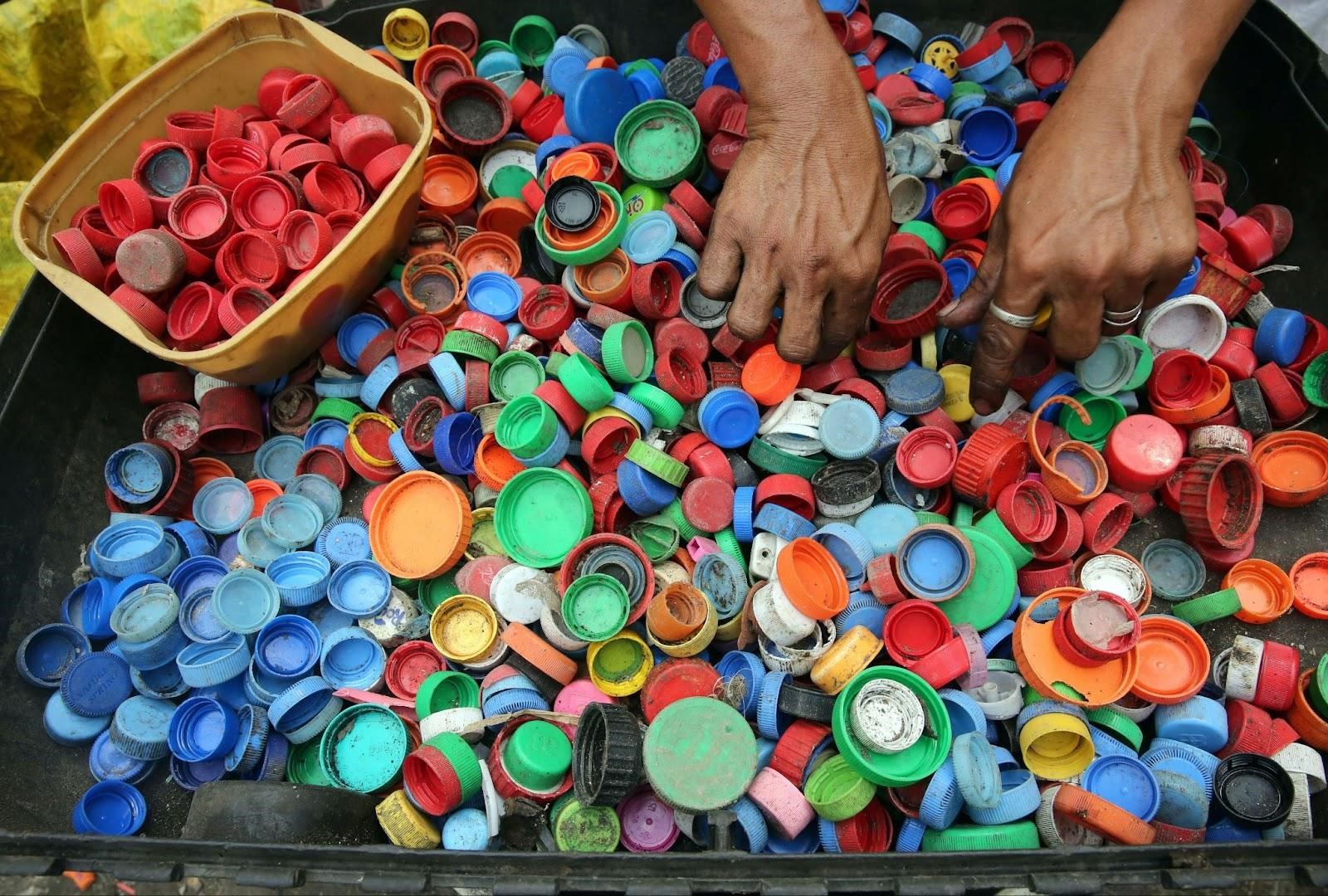
The Problem with Plastic Bags
Plastic grocery bags are usually excluded from curbside recycling. Called contaminants or troublemakers, plastic bags that enter a material recovery facility (MRF) can clog up its processing equipment and cause the facility to shut down for hours or even dayst. These problems also cost communities money; machinery jams caused by plastic bags cost the City of San Jose $1 million a year to fix, per the report.
To avoid damaging and costly problems at recycling facilities, keep plastic bags out of your recycling bin and try any of these options instead:
- Bring clean and dry plastic grocery bags, films, and wraps to a participating local retail store for recycling. A store drop-off location accepts flexible plastic packaging made with HDPE and LDPE, like grocery bags, produce bags, pouches, and air pillows as deflated. Biodegradable or compostable bags, paper-lined bags, and others are not recyclable through the Store Drop-off.
- Reuse or repurpose plastic bags.
- Reduce the usage of single-use grocery bags, as a matter of practice or required by law.
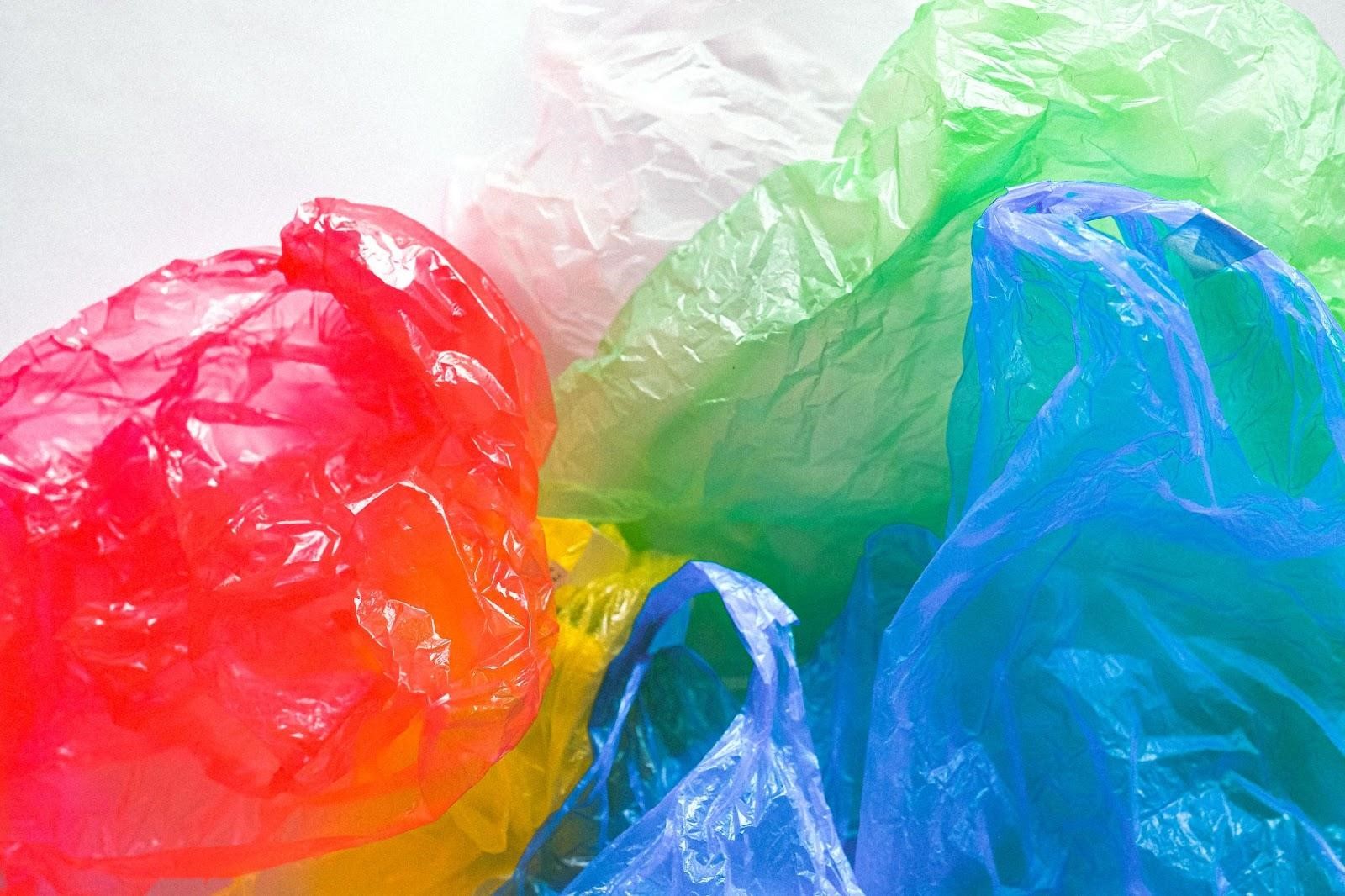
Multilayered and Mixed-Material Packaging Woes
Multi-material multilayer plastic packaging (MMPP) contains fast-moving consumer goods or those designed to have a short lifespan and be sold quickly at a lower price.
MMPP has layers of material supposed to enhance the packaging’s functionality or performance, be it flexible packaging such as shrink films and pouches or trays and other rigid packaging.
Multilayer packaging can be a combination of plastic like PE and nylon, paper lined or layered with plastic to store food, or a mixture of polyester, cast polypropylene, and aluminum.
Despite its intended purposes, this type of packaging complicates recycling because multilayer packaging calls for more advanced techniques for sorting and separating layers. The everyday coffee cup you get from cafes and shops demonstrates the complexity of separating layers not visible to the naked eye.
Chip bags also present the same problem. If you were to peel the layers of a potato chips bag, you would find biaxially oriented polypropylene inside, LDPE in the middle, and a proprietary thermoplastic resin for the outer layer, according to a packaging provider. Chip bags are not recyclable, and incinerating them is highly discouraged.
Another commonly seen item in households is the plastic pouches for various products like detergent pods or juices. These pouches are made of plastic in different types and colors and sometimes with materials like wax and foil. These are deemed to be pretty much impossible to recycle by recyclers.
For lack of sophisticated facilities or limited access to technologies that can handle multilayered and mixed material packaging, these items might end up like many other non-recyclables such as plastic straws: incinerated or landfilled.
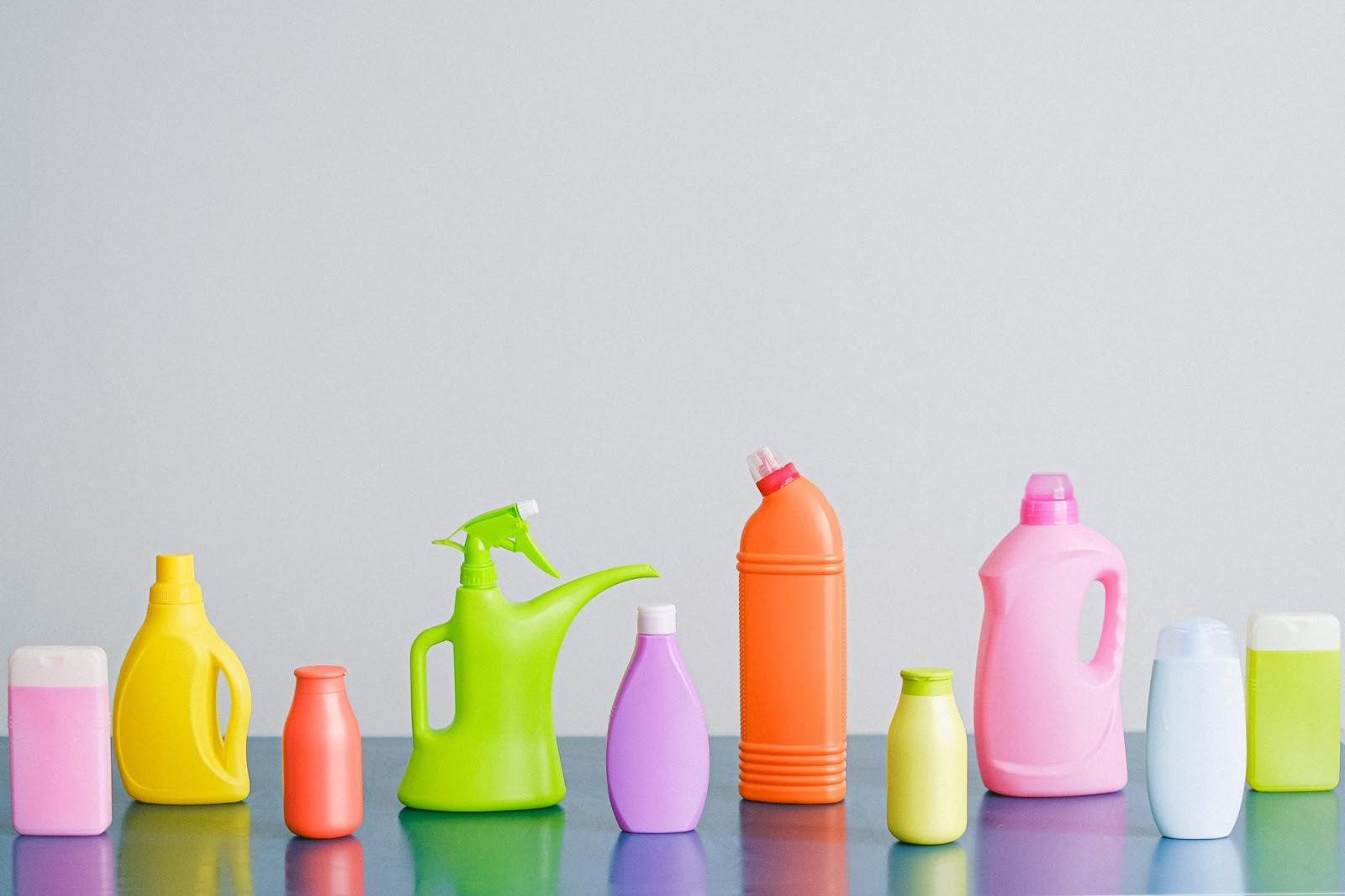
The Waste Hierarchy: Reduce, Reuse, Recycle
Recycling is a key point of a waste hierarchy presented as an inverted pyramid of solutions to manage waste from the highest to the least importance.
The waste hierarchy acts as a guide for governments, businesses, and households to find the most environmentally friendly solution to waste. As you’ll see in the following examples, reduce, reuse, and recycle are incorporated into the framework.
Zero Waste International Alliance’s Zero Waste Hierarchy 8.0 pyramid has the following priorities: rethink/redesign, reduce, reuse, recycle/compost, material recovery, residuals management, and unacceptable (incineration and waste-to-energy).
The model supports zero waste, which is “the conservation of all resources by means of responsible production, consumption, reuse, and recovery of all products, packaging, and materials without burning them and with no discharges to land, water, or air that threaten the environment or human health.”
This five-step waste hierarchy, which is the foundation of the European Union’s waste management, enumerates these options: prevention, preparing for reuse, recycling, recovery, and disposal. Under the EU waste hierarchy paradigm, preventing waste is the most preferred option and landfill the last resort.
EPA’s waste hierarchy for non-hazardous waste ranks the most to least preferred strategies for waste management. These are source reduction and reuse, recycling/composting, energy recovery, and treatment and disposal. To reduce, reuse, recycle, and compost are key to sustainable materials management, according to EPA.
Recycling has its limitations and challenges, but viewed in the overall context of waste management, it can serve as an important barrier to recyclable waste getting improperly or illegally disposed of. If waste can be prevented from occurring at the manufacturing level or at homes by reusing existing materials, that would be the best-case scenario.
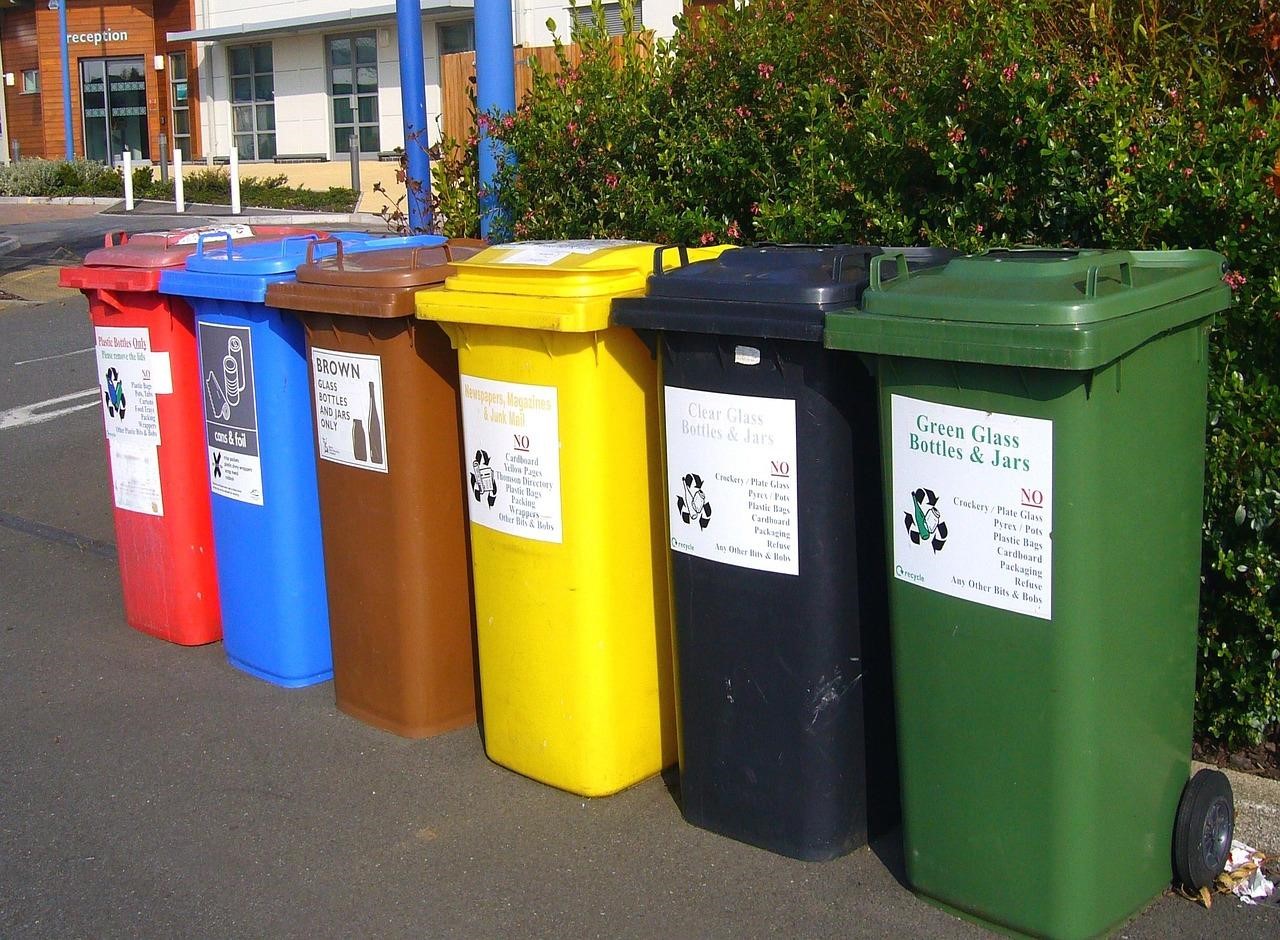
The Recycling Journey of Plastics
After preparing your plastic products for recycling, they are ready to go on a journey. Take a look at how recycling works in the US.
First, plastics and other recyclable materials are collected from your home or business.
Second, the collected materials are sent to a processing facility. They could go to a MRF where they are placed on a conveyor belt to remove plastic bags and other non-recyclable items first.
Materials are then sorted, cleaned, baled, and transported to a buyer like a manufacturing facility. Here are key processes to keep in mind about recycling plastic products:
- Sorting: Plastic is separated from paper, glass, and other materials and sorted by resin and color.
- Cleaning: Plastic has to be washed to remove contaminants and dried before they are sold. The higher the quality of the plastic, the more valuable it is.
- Pelletizing: Certain plastics may undergo additional sorting, cleaning, and processing. Reclaimers buy postconsumer plastic such as PET, clean, and sort plastic so they are ready to be sold as raw material, usually in pellet form.
Pellets are formed by melting the scrap plastic through machines. They can then be
used in injection molding manufacturing.
Third, the recyclables undergo remanufacturing, where they become new products.
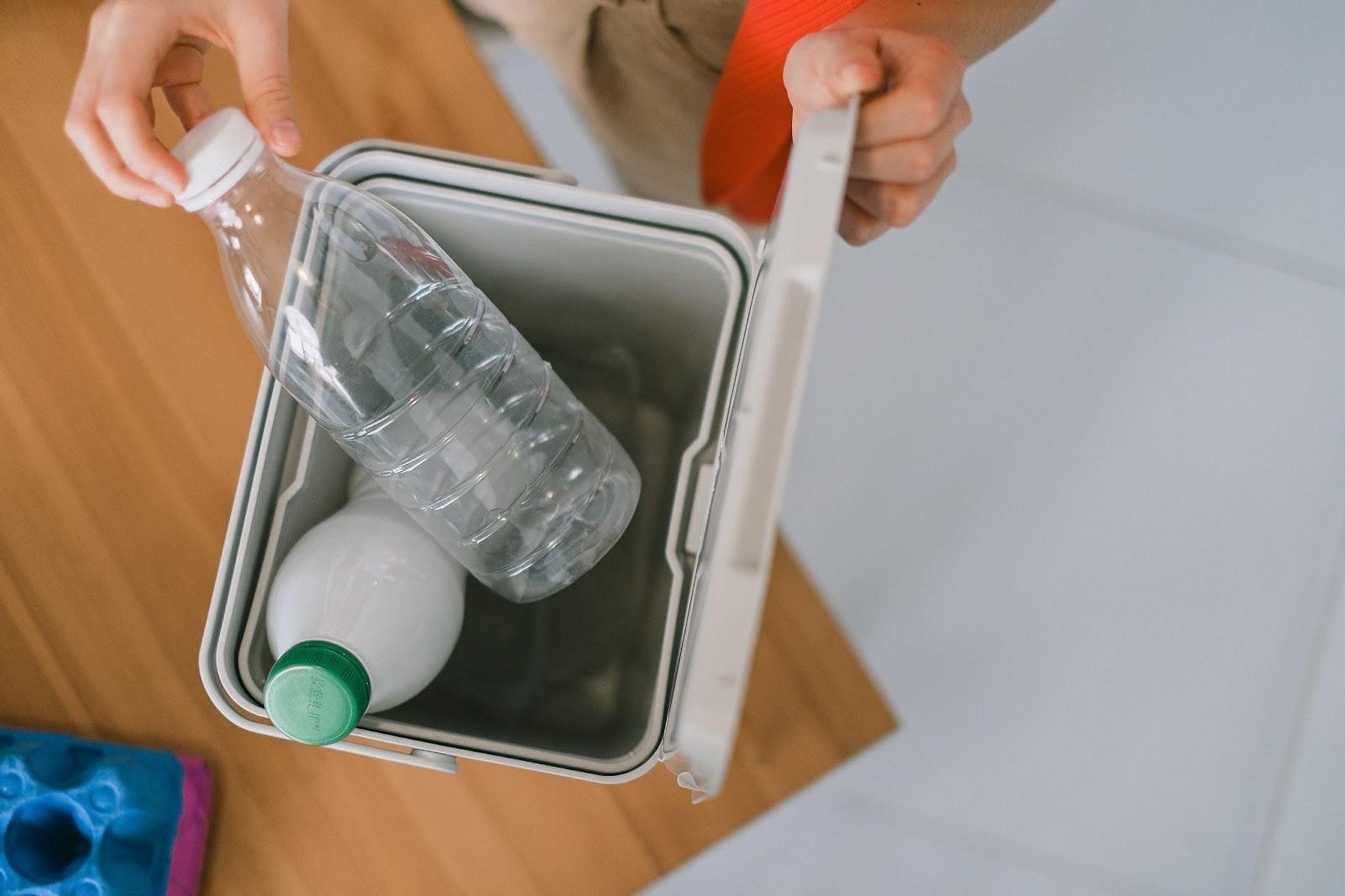
Mechanical vs. Chemical Recycling
As mentioned, mechanical recycling follows the processes for converting plastic collected and processed into plastic flakes or pellets to be made into new products. Recycling plastic this way alters its original shape, transforming them into anything that’s useful for manufacturers or brands. Actions associated with mechanical recycling include grinding, melting, sorting, cleaning, and washing.
Chemical recycling focuses on breaking down polymers into feedstocks or raw materials for making new products. Chemical recycling is sometimes called advanced recycling, which uses technologies that change the chemical structure of the used plastic using heat, chemical reactions, or both. Pyrolysis is one technique of converting plastic waste into fuels.
In a way, mechanical and chemical recycling share the same goal of reducing plastic waste using different processes. They are touted to work together to increase the rate and volume of plastics for recycling.
For comparison purposes, let’s highlight their pros and cons:
| Pros | Cons | |
| Mechanical recycling | Most widely known or used method of recycling plasticsStraightforward for easier-to-sort plastic like PET bottles | Accepts limited types of plastics (i.e., plastic has to be recyclable in the first place).Results in lower or inconsistent quality of plastic because it can’t be recycled indefinitely. |
| Chemical Recycling | Can process many kinds of used plastic, including mixed and contaminated plastic Can repeatedly extend the life of plastics | Relatively new and in development—22 states have adopted laws on advanced recycling as a manufacturing process. Might require higher costs to operate and is energy-intensive with greenhouse gas emissions from the heat and chemical processes. |
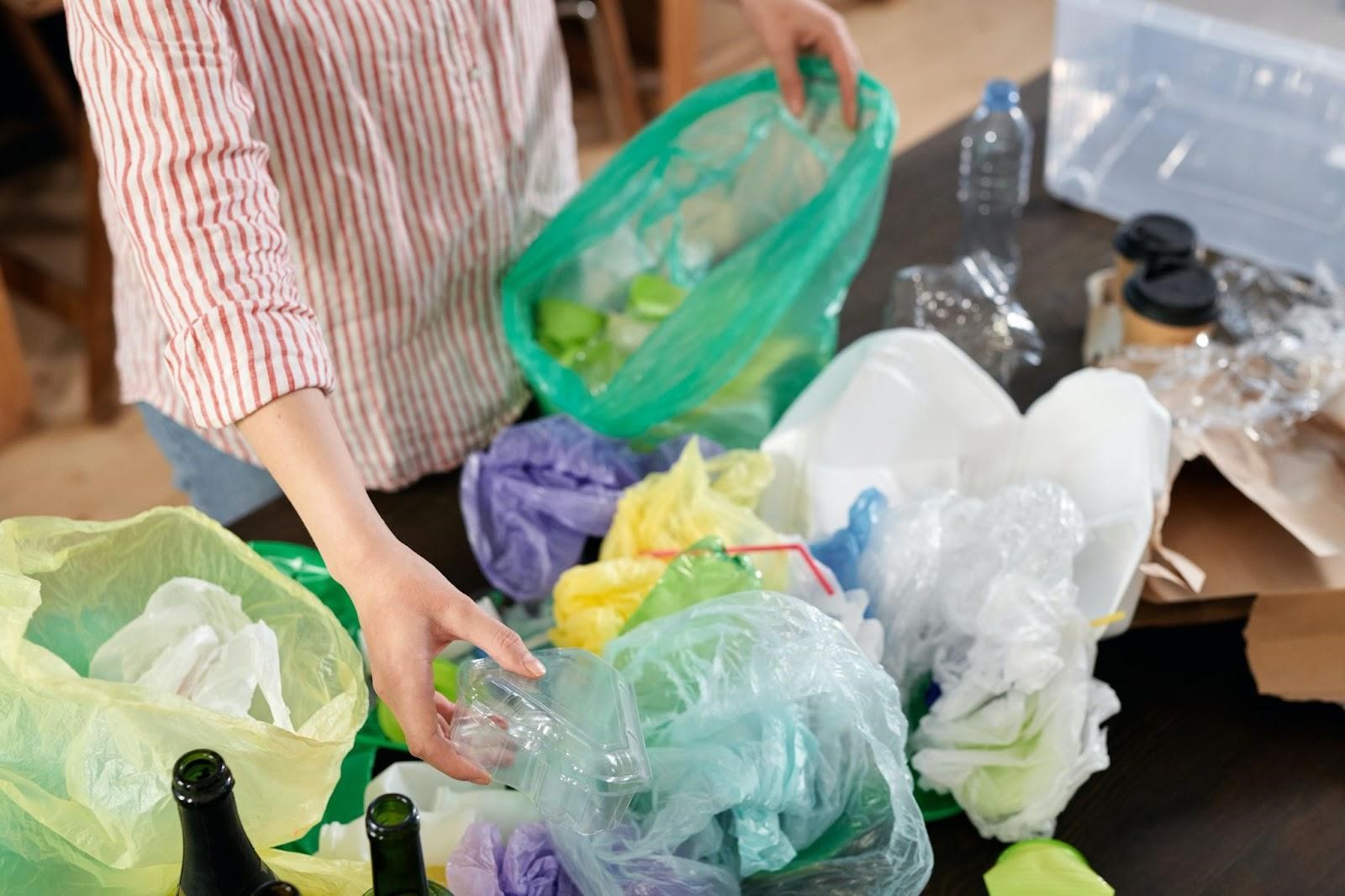
Local Recycling Rules and Regulations
State and local governments have varying laws and regulations on waste, recycling, and mechanisms that make their waste management programs. Take, for example, single-use plastic bags, which are banned in eight states, including California, according to the National Conference of State Legislatures. California has also recently passed a law that would require all packaging to be recyclable or compostable by 2032.
In addition, these states and Guam have bottle deposit laws encouraging the return of relevant beverage bottles to reduce waste. Twenty-five states and the District of Columbia also have e-waste laws that may include programs to recycle electronics.
As pointed out earlier, markets for recycled materials also vary and spur activity for recycling certain resins. Residential recycling facilities also differ across the country. Check your state’s official website. Sometimes they have recycling guides and tools for looking up places to drop off recyclables. Get even more specific and look up your city or town’s website to determine what to put in your recycling bin and garbage cart.
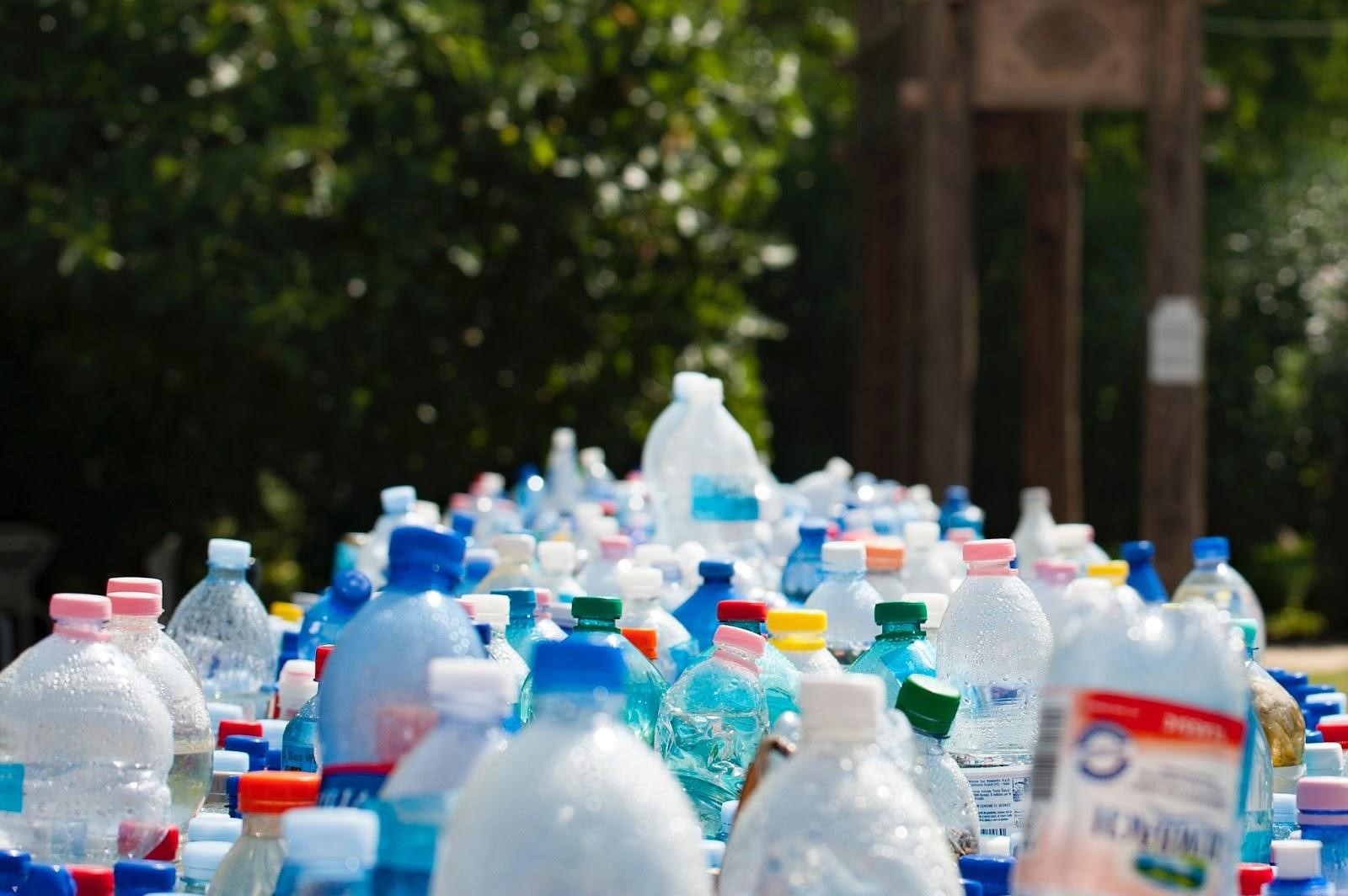
Biodegradable and Compostable Plastics
The US Plastics Pact aims for “100% of plastic packaging will be reusable, recyclable, or compostable by 2025” as part of its Roadmap to 2025. Compostable and biodegradable packaging has been touted as the green alternatives, but what are they, really?
Biodegradable plastic is supposed to biodegrade through the action of living microorganisms, possibly in soil or water, in a given time. Per the Federal Trade Commission (FTC)’s Green Guides, a marketer is advised not to make any degradable claim about a solid product waste unless it can prove that “the entire product or package will completely break down and return to nature within one year after customary disposal.”
Plastic designed as compostable also biodegrades, being a subset of biodegradable plastic. But the compostable plastic has to be in a home or industrial composting facility that operates under controlled conditions.
How To Properly Dispose of Biodegradable and Compostable Plastics (and Avoid These Pitfalls)
Biodegradable and compostable plastics are generally not recyclable. Unless local guidance tells you so, don’t mix them with other recyclable plastic types to avoid contamination. Moreover, biodegradable plastic is not necessarily compostable.
For compostable plastics, check if the item is home compostable—that is, you can use your backyard composting bin or those marked for composting in industrial facilities. You’ll also have to check if composters in your area accept this kind of plastic.
Biodegradable plastics will break down naturally, but they can’t just be left anywhere just the same. Conventional plastics can take years to degrade, if at all, and turn into microplastics. You may have to put biodegradable plastics in a trash bin to be sent to the landfill.

Quality Comparison: Recycled vs. Virgin Plastic
Which is of better quality? Consider these points about post-consumer recycled content (PCR) and virgin plastic.
Performance: Plastic has a finite number of times it can be recycled, and quality is dependent on the processes. Compare that to something newly manufactured, pristine, and pure. This study demonstrates the significant differences between virgin and recycled HDPE based on certain characteristics, taking note of the impact of sorting and recycling on the material.
While virgin plastic is pretty much used in all applications because of its durability and strength, it doesn’t preclude the use of recycled content such as in sustainable packaging of consumer products. This study looks into the results of using recycled plastic caps as a substitute for virgin polypropylene.
Cost: The multiple processes that make recycling add up and make it costlier than manufacturing new resin, especially when oil prices fall. There’s hope, though, for the economics behind plastic recycling to improve.
Environmental impact: It requires less energy to produce recycled plastic than its virgin counterpart. Recycling reduces waste in landfills, as opposed to adding a new one in circulation. More greenhouse gas emissions are associated with virgin plastic production than recycling.
Advanced cleaning and sorting can remove impurities that could weaken the recycled plastic. Strategies can also be added to mechanical recycling to ensure a higher, consistent quality of plastic.
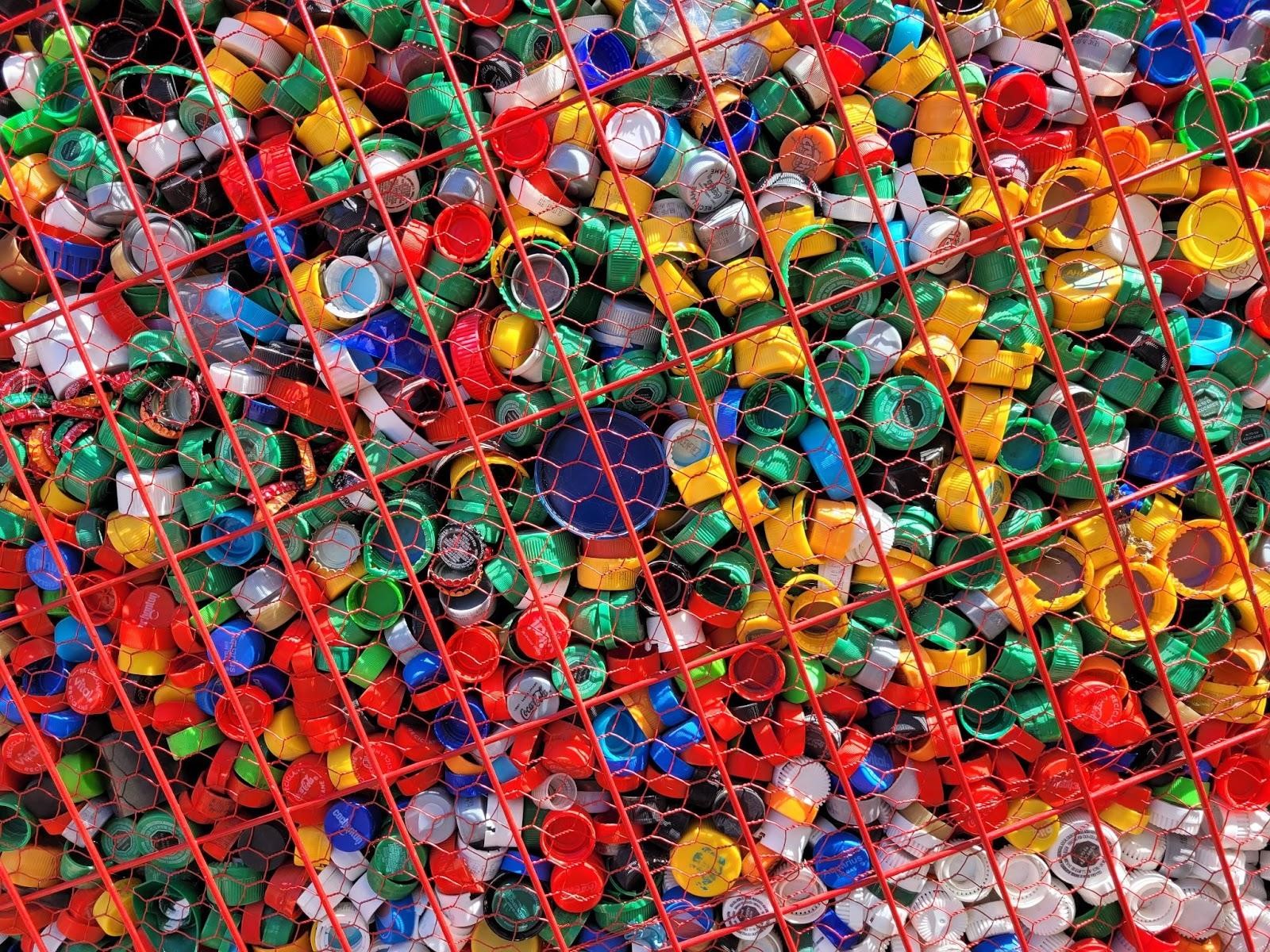
Innovative Solutions to Plastic Packaging
Accessible and disposable plastic packaging adds to the plastic waste problem that affects people, animals, plants, and the environment for a long time. These breakthroughs show that there are ways to tap the usefulness of plastics with lower environmental impact for now:
- Plant-based plastic. Traditional plastics are derived from fossil fuels, but their plant-based counterparts prove they can be produced without oil. Also referred to as bio-based, this kind of plastic is made in whole or in part from renewable sources like crops and is an alternative to conventional plastic packaging. For the bio-based plastic to be really beneficial, it has to be responsibly sourced.
- Sustainable plastic bottles. That condiment packaging or water bottle could have circular design, improved sustainability, and have no labels to avoid contaminating the recycling stream. Check out this roundup of examples.
- Edible packaging. These innovative products let you have your food and its packaging too. Edible packaging is made with plant-based materials that are also food-grade. Even if you don’t really eat this edible sachet made with seaweed, it dissolves in water.
Plastic comes full circle when it returns and reduces the requirement for virgin plastic. Examples of companies that close the loop include Mars and its KIND snack bar packaging, Unilever and its food-grade recycled packaging, and Diageo and its sustainable packaging format (pilot).
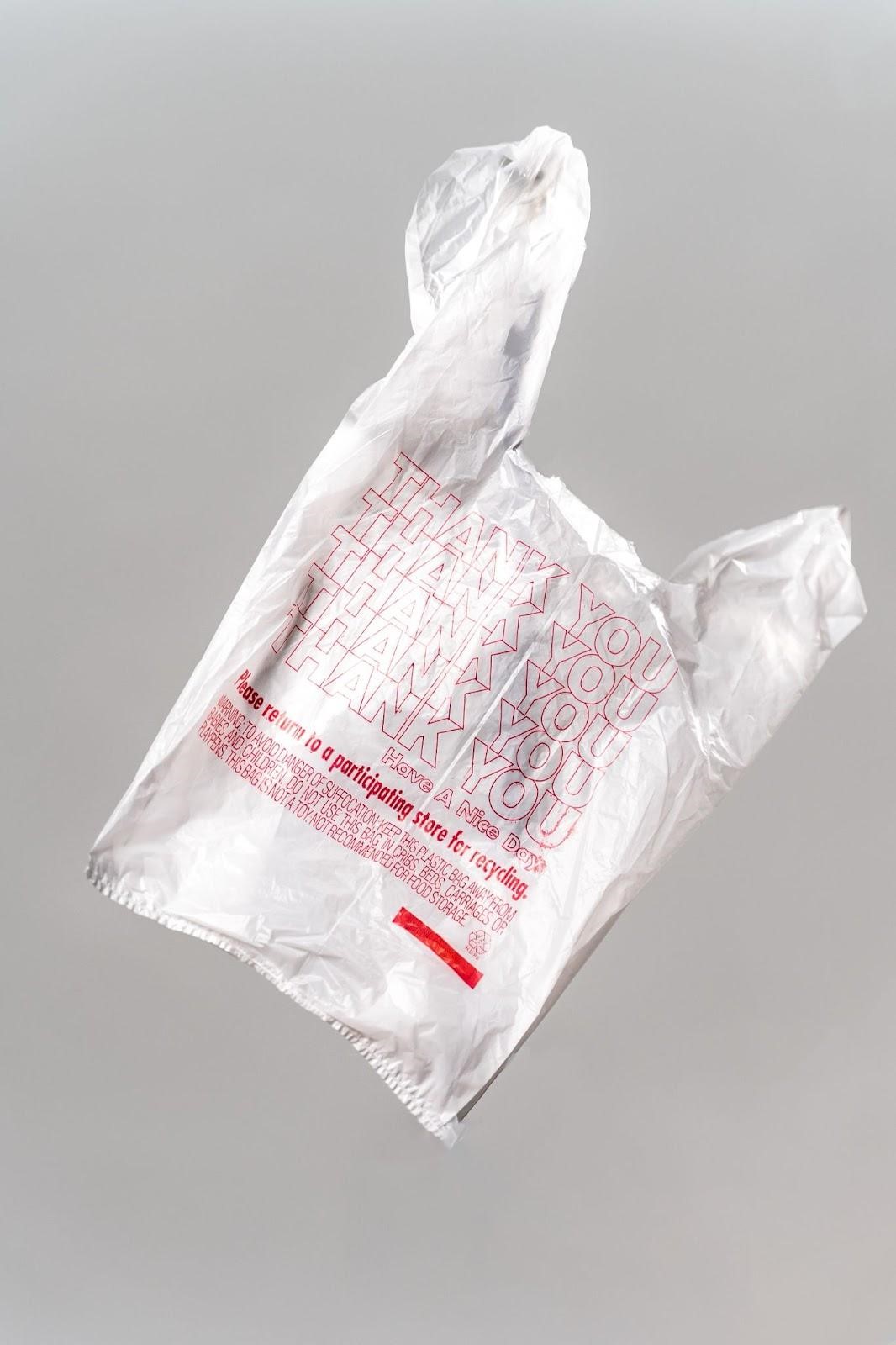
Conclusion
The future of plastic packaging recycling is clear, when you think about policies, technologies, and mindsets that could reshape the process for the better, against the backdrop of climate change.
There’s still a lot of work to be done, including laws aimed to encourage companies to use recycled content and invest in research and recycling infrastructure (as part of their business or their main business). Recycling efforts would be a waste if there is no market for the PCR, not to mention its quality falling short of what brands want for their products.
Underlying advanced and accessible recycling programs is the belief that recycling is part of a bigger picture—waste hierarchy and related paradigms have shown us that. Source reduction and reuse are preferred over recycling, if it can be helped.
And until such time as most plastic packaging becomes more circular, the main task at hand is to recycle existing packaging to reduce waste and lessen the potential of it polluting our planet.
References
- Arthurs, I. (2022, November 8). The Economic Case for Recycled Plastics Is Improving. IndustryWeek. https://www.industryweek.com/the-economy/environment/article/21254249/the-economic-case-for-recycled-plastics-is-improving
- Bryce, E. (2021, January 18). How do we turn oil into plastic? livescience.com. https://www.livescience.com/how-oil-is-turned-into-plastic.html
- Can chemical recycling reduce plastic pollution? (2021, October 05). U.S. GAO.https://www.gao.gov/blog/can-chemical-recycling-reduce-plastic-pollution#
- Center for International Environmental Law. (2022, April 9). Plastic & Climate: The Hidden Costs of a Plastic Planet – Center for International Environmental Law. https://www.ciel.org/project-update/plastic-climate-the-hidden-costs-of-a-plastic-planet/
- Climate Change and Waste: Reducing Waste Can Make a Difference. (n.d.). US EPA. https://archive.epa.gov/epawaste/nonhaz/municipal/web/pdf/climfold.pdf
- De Mello Soares, C. T., Ek, M., Östmark, E., Gällstedt, M., & Karlsson, S. (2022). Recycling of multi-material multilayer plastic packaging: Current trends and future scenarios. Resources, Conservation and Recycling, 176, 105905. https://doi.org/10.1016/j.resconrec.2021.105905
- Frequently Asked Questions. (n.d.). The Association of Plastic Recyclers. https://plasticsrecycling.org/images/library/APR-Caps-On-FAQ.pdf
- Frequently Asked Questions about Plastic Recycling and Composting | US EPA. (2023, August 9). US EPA. https://www.epa.gov/trash-free-waters/frequently-asked-questions-about-plastic-recycling-and-composting
- FTC issues revised “Green Guides.” (2019, February 28). Federal Trade Commission. https://www.ftc.gov/news-events/news/press-releases/2012/10/ftc-issues-revised-green-guides
- Guide to the Facts and Figures Report about Materials, Waste and Recycling | US EPA. (2023, April 21). US EPA. https://www.epa.gov/facts-and-figures-about-materials-waste-and-recycling/guide-facts-and-figures-report-about
- Kelechava, B. (2019, February 21). Resin Identification Codes (RICS), as specified by ASTM D7611. The ANSI Blog. https://blog.ansi.org/2019/02/resin-identification-codes-rics-astm-d7611/
- Marine plastic pollution. (2021, November). IUCN. https://www.iucn.org/resources/issues-brief/marine-plastic-pollution
- NEW YORK STATE PLASTIC BAG TASK FORCE REPORT: An Analysis of the Impact of Single-Use Plastic Bags Options for New York State Plastic Bag Legislation. (2018). NY DEC. https://www.dec.ny.gov/docs/materials_minerals_pdf/dplasticbagreport2017.pdf
- Refining crude oil – the refining process – U.S. Energy Information Administration (EIA). (2023, February 22).https://www.eia.gov/energyexplained/oil-and-petroleum-products/refining-crude-oil-the-refining-process.php
- Report: Methodology for the Assessment of Bioplastic Feedstocks | Publications | WWF. (2022, February 14). World Wildlife Fund. https://www.worldwildlife.org/publications/report-methodology-for-the-assessment-of-bioplastic-feedstocks
- Sortation: NIR, Metals, Size, color. (n.d.) The Association of Plastic Recyclers. https://plasticsrecycling.org/sortation-nir-metals-size
- Standard Specification for Labeling of Plastics Designed to be Aerobically Composted in Municipal or Industrial Facilities. (2023, March 10). https://www.astm.org/d6400-23.html
- State Beverage Container Deposit Laws. (2023, September 13). https://www.ncsl.org/environment-and-natural-resources/state-beverage-container-deposit-laws
- State Plastic Bag Legislation. (2023, September 13). https://www.ncsl.org/environment-and-natural-resources/state-plastic-bag-legislation
- The U.S. Recycling System | US EPA. (2022, November 15). US EPA. https://www.epa.gov/circulareconomy/us-recycling-system
- United Nations Environment Programme. (2018, August 24). Double trouble: plastics found to emit potent greenhouse gases. UNEP. https://www.unep.org/news-and-stories/story/double-trouble-plastics-found-emit-potent-greenhouse-gases
- U.S. Plastics Pact Unveils National Strategy to Achieve 2025 Circular Economy Goals – The U.S. Plastics Pact. (2021, June 15). The U.S. Plastics Pact -. https://usplasticspact.org/u-s-plastics-pact-unveils-national-strategy-to-achieve-2025-circular-economy-goals/
- Winters, J. (2022, April 21). Rich countries are illegally exporting plastic trash to poor countries, data suggests. InvestigateWest – We Keep an Eye on Decision-makers in the Pacific Northwest. https://www.invw.org/2022/04/18/rich-countries-are-illegally-exporting-plastic-trash-to-poor-countries-data-suggests/
- Wolberg, C. (2021, May 19). The Performance of Recycled Plastics vs Virgin Plastics. Oceanworks. https://oceanworks.co/blogs/ocean-plastic-news/the-performance-of-recycled-vs-virgin-plastics
Table of Contents
- Understanding Plastic Packaging
- The Importance of Recycling
- The Different Plastic Types
- Recyclability of Different Plastics
- Preparing Plastics for Recycling
- The Problem with Plastic Bags
- Multilayered and Mixed-Material Packaging Woes
- The Waste Hierarchy: Reduce, Reuse, Recycle
- The Recycling Journey of Plastics
- Mechanical vs. Chemical Recycling
- Local Recycling Rules and Regulations
- Biodegradable and Compostable Plastics
- Quality Comparison: Recycled vs. Virgin Plastic
- Innovative Solutions to Plastic Packaging




